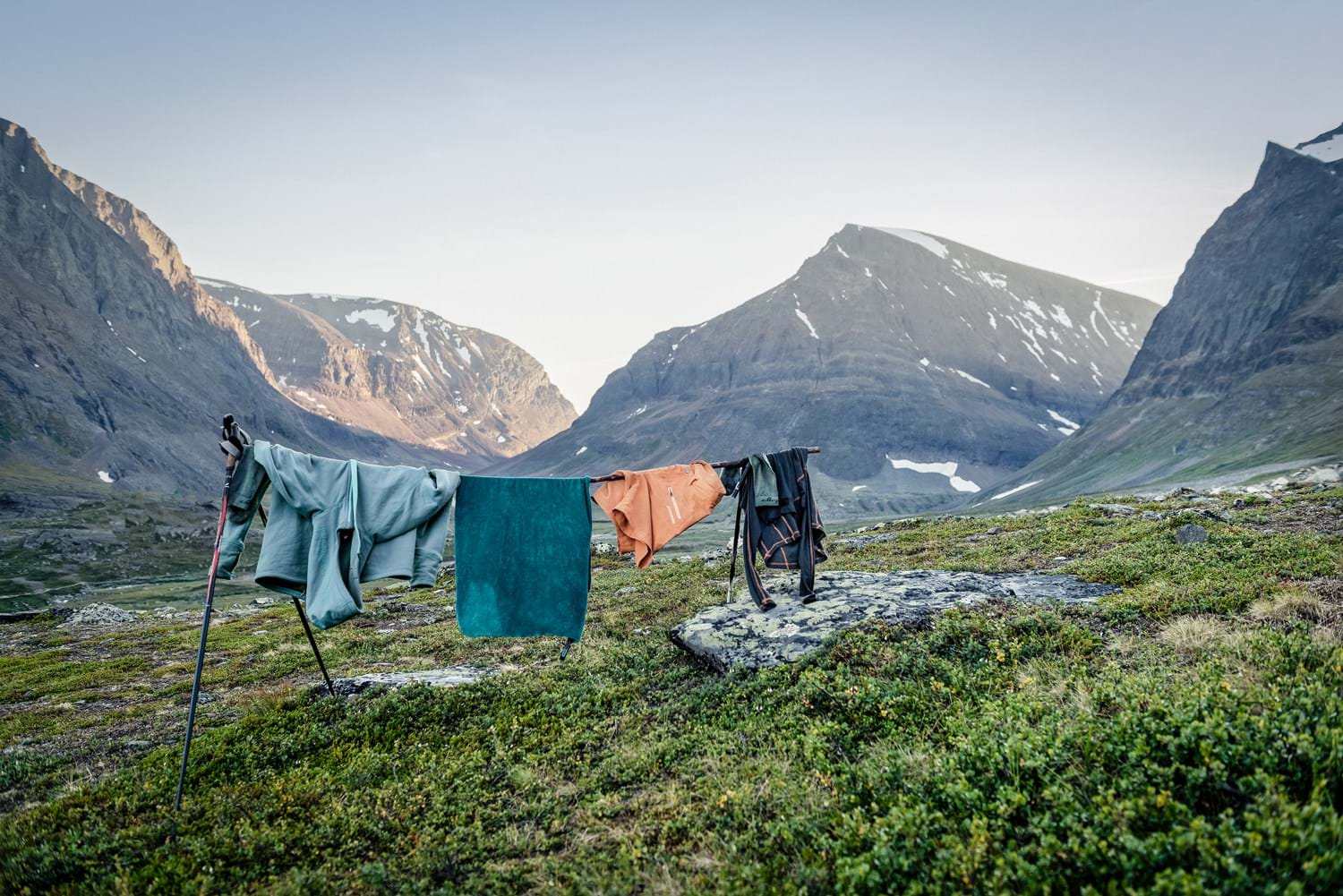Why Gear Maintenance Matters
Many of us fall into the habit of replacing our gear too quickly. A torn jacket? Time for a new one. Fading waterproofing? Buy another. But if we shift our mindset toward proper maintenance, we can reduce waste, save money, and preserve the performance of our favorite gear for years to come.
Here’s the good news: caring for your gear is easy when you know what to do. A little effort goes a long way in preventing deterioration, maintaining functionality, and reducing your ecological footprint.
Technical fabrics – like those found in hiking jackets, base layers, and waterproof shells – are designed to withstand the elements. But they also require specific care to keep them performing at their best.
1. Wash less, air more
Over-washing synthetic outdoor gear can break down its fibers and reduce its lifespan. Unless your gear is visibly dirty or has absorbed sweat, air it out after each use instead of tossing it in the laundry.
2. Use the right detergent
Standard laundry detergents can leave residues that reduce breathability and water repellency. Instead, opt for a gentle, eco-friendly detergent that is free from harsh chemicals and fragrances.
3. Avoid fabric softeners
Fabric softeners coat performance fabrics, reducing their ability to wick moisture and breathe. Skip them altogether.
4. Restore water repellency
DWR (Durable Water Repellent) coatings on waterproof jackets wear off over time. To restore water resistance, wash your jacket with a specialized cleaner and reapply a DWR treatment when necessary.
5. Drying matters
Some waterproof fabrics benefit from low-heat tumble drying, which helps reactivate the water-repellent finish. Always check care labels to avoid damaging sensitive materials.


